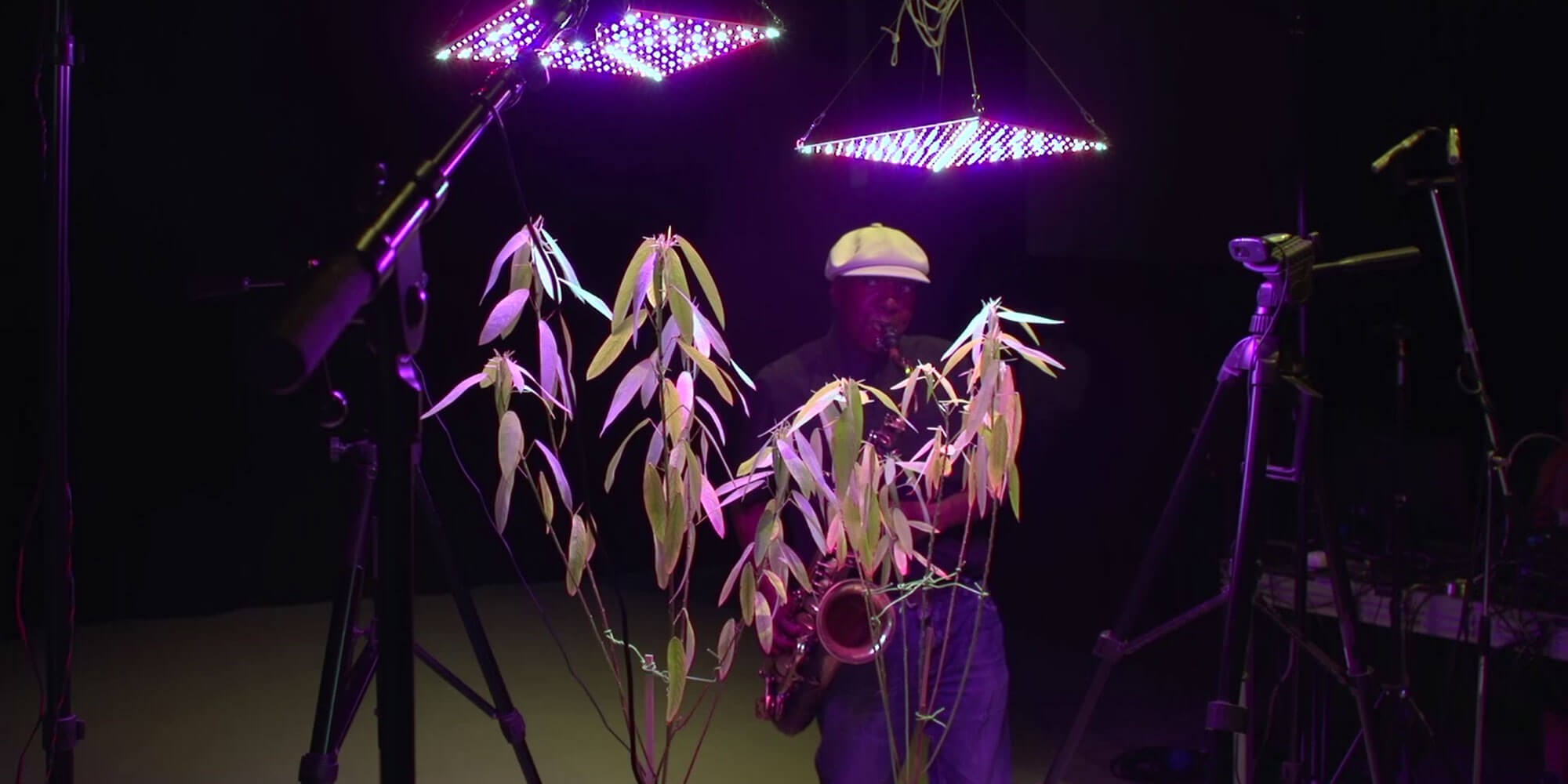“Hypergravity Bio Portal”, Christiaan Zwanikken (NL)

Title of the artwork: Hypergravity Bio Portal
Author: Christiaan Zwanikken
Date: 2021
Source: https://www.artsciencegallery.nl/app/uploads/2022/04/CHRISTIAAN_ZWANIKKEN_023.jpg
ARTWORK ABSTRACT
In 2020, Zwanikken began using red basil plants to investigate the effects of gravity on their growth behavior by spinning the plants around a hypergravity mechanism whereby they experience four times more gravity than usual. He found that this was able to stimulate plants at the cellular level and change their physiology in interesting ways.
Since then, he has been developing this work, which is in continuous process, including new stimuli for plants in its different editions, such as music or stroboscopic lights, testing their response mechanisms to them.
GET INSPIRED
What if we attended a concert by the renowned American saxophonist Zane Massey and part of the audience were plants? What if these plants could dance to the music? This could be seen at the 2021 edition of Ars Electronica in Amsterdam. Zane Massey performed live in the presence of several dancing plants. Through small cameras the online audience could closely observe the behavior of the plants as they and the saxophonist interacted through the music.
WHAT DOES THIS WORK TRANSMIT TO US?
What materials / media are used in the work and why?
This work could be considered a sculptural-kinetic installation. It consists of a mechanism to induce gravity, multiple specimens of the plant Codariocalyx motorius, and elements to see how the plants respond to sensory changes in their environment, such as small cameras. In the second edition of the work, in 2022 at the VU ART SCIENCE gallery in Amsterdam, strobe lights have been added to see how the plants respond to irregular light intervals. In addition, the strobes provide a surreal visual effect to the viewer. Another addition to the Hypergravity Bio Portal is a feedback loop in which the plants can send electrical pulses to a music system that allows them to respond to their environment with a musical sound.
What is the significance of the elements of the work?
How to connect to the plants? Zwanikken tried to imagine how plants would grow to maturity in a centrifuge for at least four to five months. Intrigued by the idea of a possible sculptural result that would be formed by the continuous growth of plants in a rapidly spinning disk, he decided to build a prototype and find out. At V2_Lab, Zwanikken conducted live-streamed experiments to investigate the influence on plant behavior. Zwanikken was also interested in the effects of music on plant growth, and was fascinated by the behavior of the plant Codariocalyx motorius, also known as Desmodium gyrans. This tropical Asian shrub, whose other names include telegraph plant, dancing plant, and semaphore plant, is one of the few plants capable of moving quickly and responding to musical stimuli.
Zwanikken’s dancing plants not only moved in direct response to the music he exposed them to, but even seemed to have a strong genre preference: jazz.
Experimenting with plants, their sensory methods and root structures, Zwanikken focuses on plant behavior and responses to different human-induced environmental changes in his research.
This work has been made possible thanks to the programming of the “3×3” section, at V2 Lab (Rotterdam), where they understand scientific experiments as an essential part of all artistic practice. Even more than the final results, experiments, beta versions and tests offer an inside look at how an artist thinks and works.
V2_Lab offers three artists the space, time and resources to develop three experiments. Every first Friday night of the month, the public can witness one of these experiments live. A unique experience, as no one knows what experiments will lead to…
About the artist
Christiaan Zwanikken has received international recognition through his kinetic and mechanical sculptures, sound works, performative and responsive installations. Using a variety of sculptural media, robotics, biology, microcontrollers and sound, his work is both an artistic and technological experiment in which innovation and invention play an important role.
Author of the analysis: Amalia Ortega Rodas

